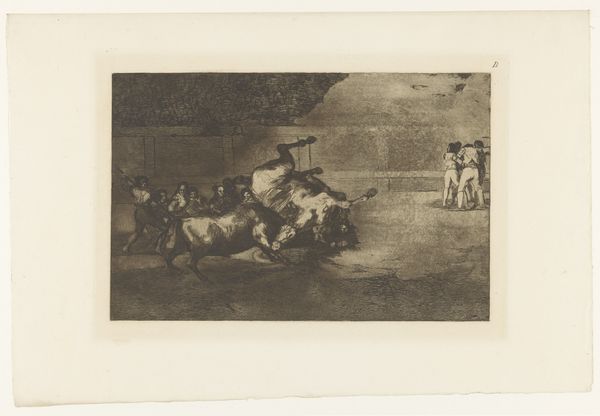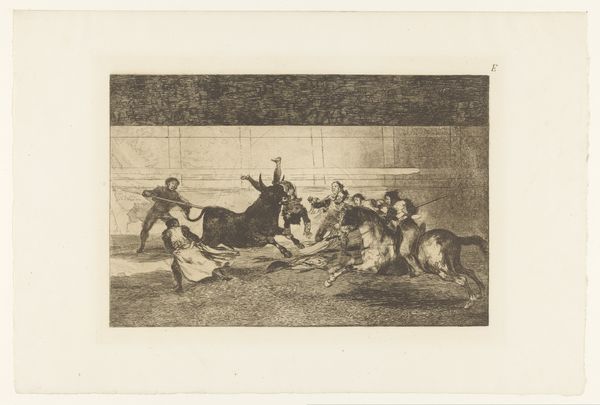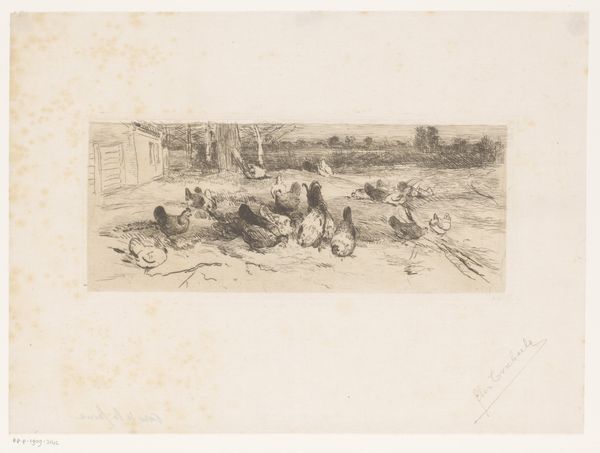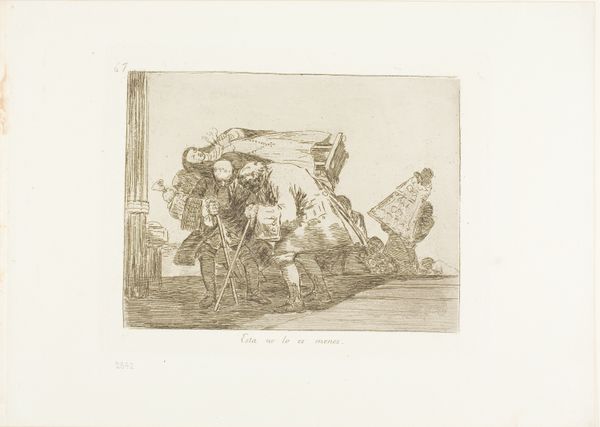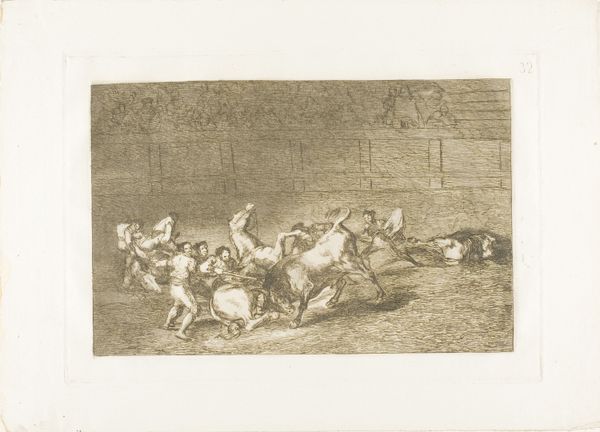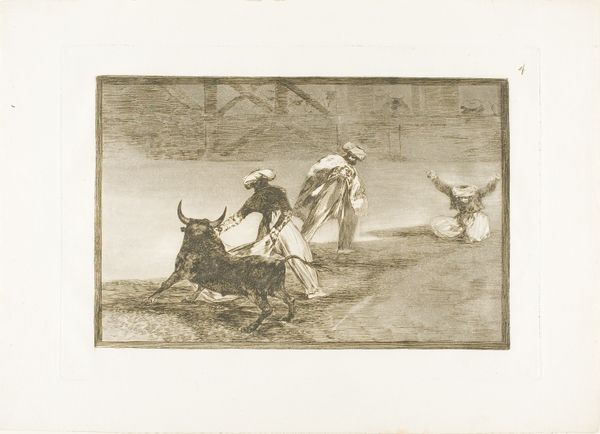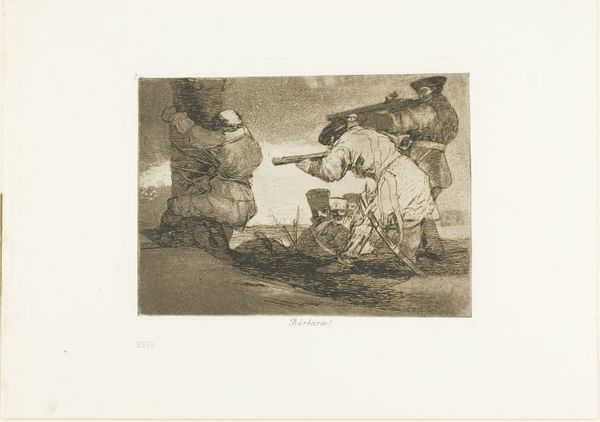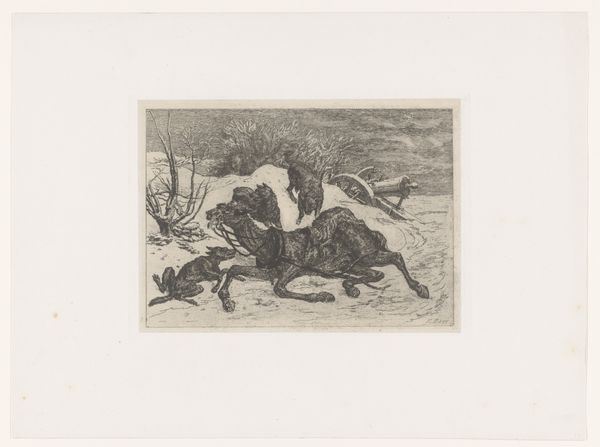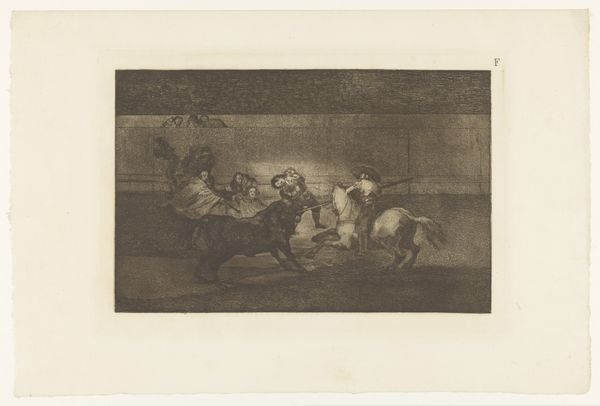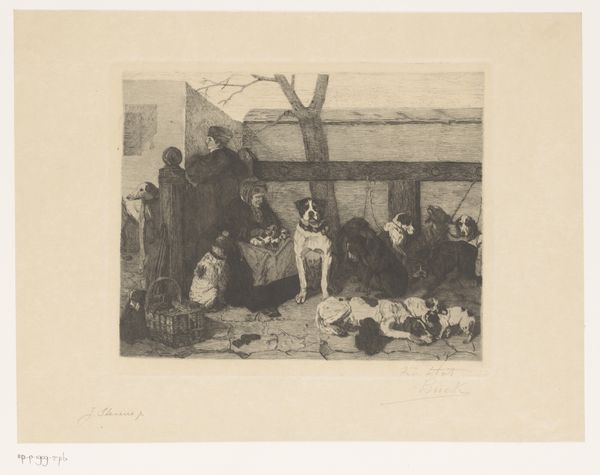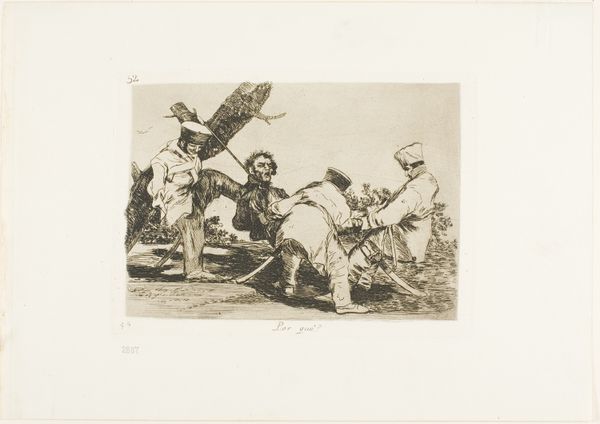
Dimensions: height 251 mm, width 352 mm
Copyright: Rijks Museum: Open Domain
Curator: Goya's 1876 print, "Mannen vallen een stier aan vanaf een rijtuig"— "Men Attack a Bull from a Carriage," currently held at the Rijksmuseum—depicts precisely that. What’s your first take? Editor: It’s...claustrophobic. The frenzied energy of the bullfight is contained within this small etching, and that amplifies the brutality. There's a tension between the apparent spectacle and the rather grim scene unfolding in the arena itself. Curator: I see that tension, certainly. Bullfighting as spectacle versus lived violence. Goya’s fascination with bullfighting is well-known; he explored it throughout his career. There is that potent symbolic opposition in bullfighting, between order and chaos. Editor: Exactly! And how that translates into social dynamics is fascinating. Who's allowed to cause chaos? What power structures does it reinforce? Curator: This print seems less celebratory than some other bullfighting depictions, though. It almost leans into the irrationality, the pure, chaotic energy. Look at the crowd sketched in the background. Barely distinguishable, caught up in the moment. Is this how irrational violence spreads throughout a society? Editor: Yes, and the image's inherent flatness exacerbates that effect. By minimizing depth and emphasizing line work, Goya turns figures into symbols, social commentary into something universally applicable. Curator: What is striking about Goya’s vision is his skepticism. He's not glorifying this tradition uncritically. Instead, we’re left questioning the cost of the spectacle, the ritualistic violence that pervades. In truth, what does this tradition represent in cultural memory? Editor: I wonder how intentional Goya's political critique was in creating it, though. Is this direct social commentary, or an artist trying to depict what violence does to a nation's collective psyche? I always feel it can be hard to separate the intention from the impression it leaves over time. Curator: Well, in our modern culture, these sorts of spectacles are losing their original intent. Is the symbolism as emotionally and culturally powerful today as it was when the print was made? Editor: Perhaps it's evolved. Maybe we see echoes of that chaotic violence not just in bullrings, but in any system where power imbalances are exploited for entertainment. Goya forces us to remember that no spectacle exists in a vacuum. Curator: He forces us to look closer, definitely. A stark reminder about the seductive nature of chaos—and its enduring cultural significance. Editor: Absolutely, and in etching, Goya also memorializes bullfighting traditions which have become artifacts in themselves. A complex legacy preserved for us today.
Comments
No comments
Be the first to comment and join the conversation on the ultimate creative platform.
